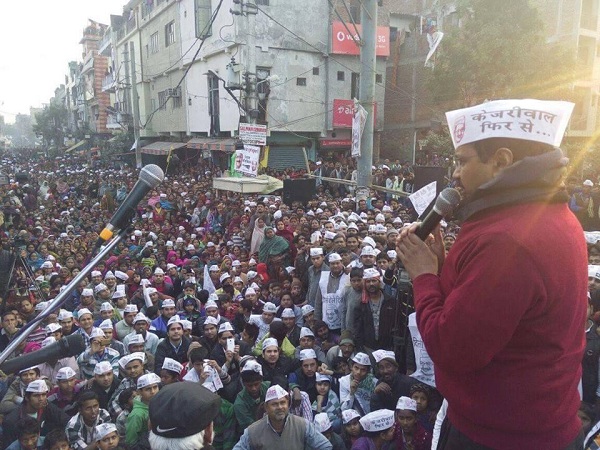By Abdul Rashid Agwan
Thanks to the dioxins, emitted by the so-called Okhla Waste-to-Energy Plant, the next generations taking birth in Okhla area may be genetically deformed.
By definition, dioxin is “a highly toxic compound produced as a by-product in some manufacturing processes. It is a serious and persistent environmental pollutant.”
Though a number of dioxins collectively nicknamed as “dirty dozen” exist in the environment throughout the world and as such not considered harmful for human life in spite of people’s background exposure to them, but their concentration in the air of a given area may lead to precarious results.
According to the World Health Organisation (WHO), “Dioxins are highly toxic and can cause reproductive and developmental problems, damage the immune system, interfere with hormones and also cause cancer.”
The WHO deems that apart from other polluting industries in terms of dioxin release into the environment, “uncontrolled waste incinerators (solid waste and hospital waste) are often the worst culprits, due to incomplete burning.”
Unfortunately, one such incinerator is operational 24×7 amidst some posh localities in an area, having a few prominent hospitals and a central university at a throw way distance. The Central Road Research Institute, the Institute of Genomics and Integrative Biology, the Indraprastha Institute of Information Technology, and several schools are also in the range of pollution emitted from the incinerator established by a well-known industrial group of the country, under Jindal Urban Infrastructure Limited.
In fact, the entire Okhla constituency, having a population of more than half million people is under threat, may it be the JJ colony Gandhi Camp near Sriniwaspuri or New Friends Colony and Maharani Bagh where some central ministers and business tycoons used to live or the minority concentration pockets of Jamia Nagar.
Medical research is replete with conclusions that the developing fetus in mother’s womb is most sensitive to dioxin exposure. It is concluded by scientists that newborn, with rapidly developing organ systems, may also be more vulnerable to certain effects.
On the behest of the National Green Tribunal (NGT), Central Pollution Control Board (CPCB) conducted a study in 2013 when the plant was just a few months in operation and reported that the air near the unit is 25 times more polluted than the permissible limit.
The level of dioxin and furan emitted from Boiler Stack I was measured by the study team at 12.4 ng TEQ/Nm3 and from Stack II at 2.8 ng TEQ/Nm3. The Delhi Pollution Control Committee “allows” only 0.1 ng TEQ/Nm3 of dioxins at the most. Evidently, the dioxin level around the infamous incinerator (Boiler Stack I) was 124 times the permissible limit at that time. Now, almost two years have passed since the last check.
“Persistent environmental contaminants such as dioxins and PCBs have been shown to modulate the activities of several hormones. The unborn child or the noenate may be at special risk from these chemicals because of rapid growth and development, in addition to enhanced exposure” journal Environ Health Perspectivesunderlines.
Studies related to effects of dioxins on animals have shown that their sperm count was reduced, mating behavior was altered, the external genitalia of the female offspring developed structural abnormalities, puberty in male offspring got delayed, and the overall fertility rate in the next generations came down.
The matter against the incinerator is presently under hearing at the National Green Tribunal (NGT). In the last NGT hearing on May 12, advocate Pinaki Mishra had submitted on behalf of the residents of Sukhdev Vihar that its owners were using “obsolete technology”. He argued that in gross violation of guidelines of the Ministry of Environment and Forest, which provide for establishing two refuse-derived fuel plants, a bio-methanation plant and a power plant, the Okhla plant was using “reciprocating stoker type boilers of Chinese origin”, which had been phased out in China itself due to the high pollution aired from them, after huge protests by locals in several cities including Guangdong and Luoding.
The emerging situation calls for an immediate closer of the plant but it has been receiving relentless support from the central and state governments. It is a well-known fact that the owners of the plant had a strong clout in the previous central and state governments. Then, the ruling party was routed firstly at the center and then in Delhi state in recent elections, on the issue of rampant corruption.
But, it is hardly understandable what could be the constraints of an “anti-corruption” party that rules Delhi now to take u-turn from its previous promise of taking action against the plant to a whole-hearted support to the harmful incinerators of the national capital through public exchequer?
[Contributor is an environmentalist and social activist who has to his credit several books including “Islam and the Environment”, published in 1993]






0 Comments